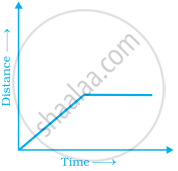Advertisements
Advertisements
प्रश्न
The ordinate of a point is its distance from the y-axis.
विकल्प
True
False
उत्तर
This statement is False.
Explanation:
The ordinate of a point is nothing but coordinate of the point and the y-coordinate denotes the distance of a point from x-axis.
APPEARS IN
संबंधित प्रश्न
Find the coordinates of points P, Q, R and S in Fig. 27.8.

______ displays data that changes continuously over periods of time.
The process of fixing a point with the help of the coordinates is known as ______ of the point.
The point where the two axes intersect is called the ______.
The distance of any point from the x-axis is called the x-coordinate.
The distance of the point (3, 5) from the y-axis is 5.
Match the coordinates given in Column A with the items mentioned in Column B.
| Column A | Column B |
| (1) (0, 5) | (a) y coordinate is 2 × x - coordinate + 1. |
| (2) (2, 3) | (b) Coordinates of origin. |
| (3) (4, 8) | (c) Only y–coordinate is zero. |
| (4) (3, 7) | (d) The distance from x-axis is 5. |
| (5) (0, 0) | (e) y coordinate is double of x-coordinate. |
| (6) (5, 0) | (f) The distance from y-axis is 2. |
Explain the situations represented by the following distance-time graph.

Locate the points A(1, 2), B(3, 4) and C(5, 2) on a graph sheet taking suitable axes. Write the coordinates of the fourth point D to complete the rhombus ABCD. Measure the diagonals of this rhombus and find whether they are equal or not.
Draw a parallelogram ABCD on a graph paper with the coordinates given in Table I. Use this table to complete Tables II and III to get the coordinates of E, F, G, H and J, K, L, M.
| Point | (x, y) |
| A | (1, 1) |
| B | (4. 4) |
| C | (8, 4) |
| D | (5, 1) |
Table I
| Point | (0.5x, 0.5y) |
| E | (0.5, 0.5) |
| F | |
| G | |
| H |
Table II
| Point | (2x, 1.5y) |
| J | (2, 1.5) |
| K | |
| L | |
| M |
Table III
Draw parallelograms EFGH and JKLM on the same graph paper.
Plot the points (2, 4) and (4, 2) on a graph paper, then draw a line segment joining these two points.
